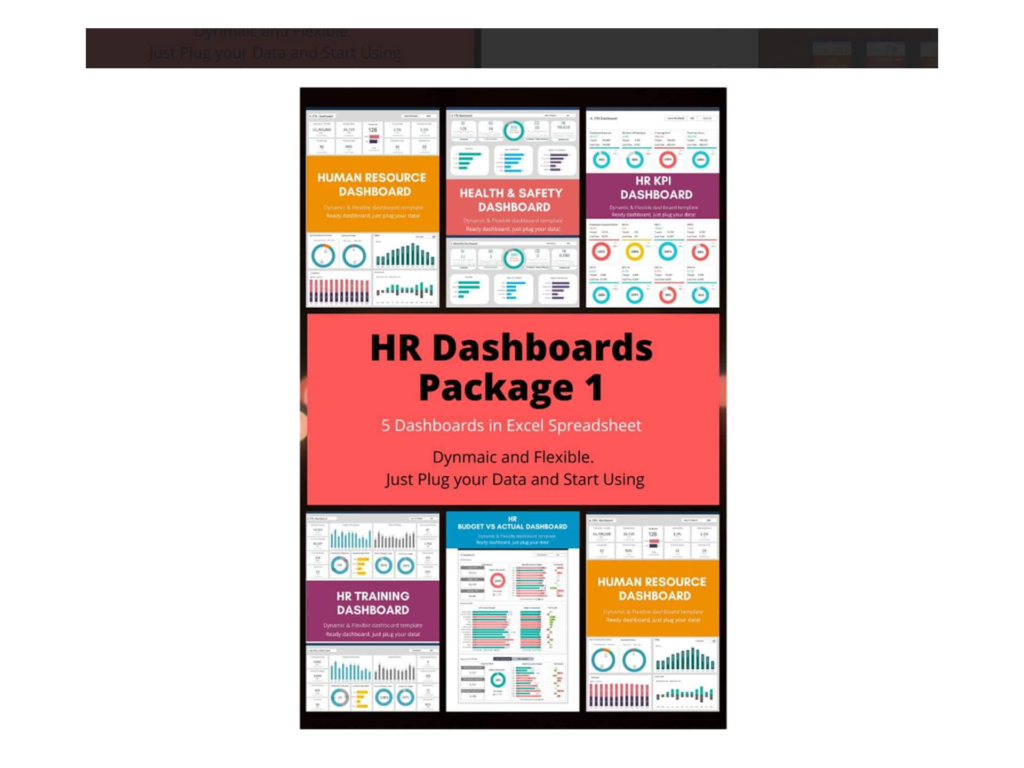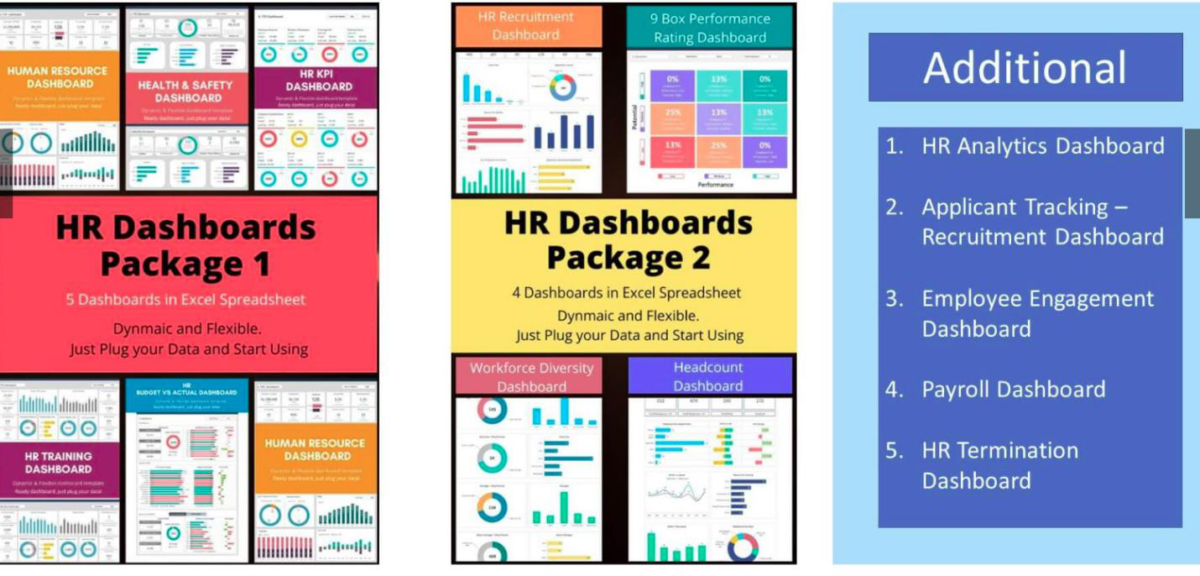HR has a critical role in managing an organization’s most valuable asset—its people. As companies grow and scale, efficiently maintaining and reporting headcount data becomes paramount for HR professionals. The use of HR headcount dashboards simplifies this process by providing real-time insights into workforce metrics.
In this long-form blog, we will explore the importance of headcount reporting, the benefits of using HR headcount dashboards, and step-by-step tips to effectively utilize these powerful tools. Let’s delve into the world of HR analytics and discover how professionally designed HR dashboards can revolutionize HR management.
The Significance of Headcount Reporting in HR
Maintaining accurate headcount data is critical for HR departments as it is the foundation for various HR processes and strategic decisions. Headcount reporting provides HR professionals with valuable insights into the size and composition of the workforce, allowing them to analyze workforce trends, forecast future staffing needs, and allocate resources efficiently.
By tracking headcount data over time, HR professionals can identify patterns, assess employee turnover rates, and gauge the impact of recruitment efforts. Additionally, headcount reporting is essential for compliance with labor regulations and legal requirements.
Benefits of Using HR Headcount Dashboards
1. Real-Time Visibility into Workforce Metrics
HR headcount dashboards offer real-time visibility into essential workforce metrics, providing HR professionals with up-to-date information on employee headcount, departmental distributions, and demographic breakdowns. Real-time data enables faster decision-making, ensuring HR departments can respond promptly to changing organizational needs.
2. Improved Data Accuracy and Efficiency
Using HR headcount dashboards streamlines data collection, management, and analysis processes. HR professionals can spend less time on manual data entry and more time on strategic HR initiatives.
3. Enhanced Workforce Planning and Forecasting
With HR headcount dashboards, HR professionals can conduct comprehensive workforce planning and forecasting exercises. They can identify potential skill gaps, succession planning opportunities, and resource allocation requirements. By understanding the organization’s future talent needs, HR can proactively address workforce challenges and prepare for growth.
4. Support for Strategic Decision-Making
Data-driven decision-making is at the core of effective HR management. HR headcount dashboards provide HR professionals with valuable insights that support strategic decision-making. Whether assessing the impact of new hiring initiatives or evaluating the effectiveness of employee retention programs, HR dashboards offer the data needed to make informed choices.
Step-by-Step Tips for Effective HR Headcount Dashboard Usage
1. Define Key Metrics and KPIs
Before creating an HR headcount dashboard, define the KPIs that align with your organization’s HR goals. Common metrics include total headcount, turnover rate, time-to-fill vacancies, and diversity representation. KPIs should be specific, measurable, attainable, relevant, and time-bound (SMART).
2. Select Professionally Designed HR Dashboard Templates
To create a visually appealing and effective HR headcount dashboard, utilize professionally designed HR dashboard templates. These templates offer pre-built layouts, charts, and graphs that present HR data clearly and visually engagingly. Choosing templates from trusted providers like Biz Infograph ensures a seamless dashboard creation process.

3. Integrate Data Sources
Integrate data from various HR systems, such as HRIS (Human Resources Information System), payroll software, and applicant tracking systems, into the dashboard. Data integration ensures that the dashboard provides a comprehensive view of HR metrics from various sources, enabling holistic insights.
4. Customize the Dashboard Layout
Tailor the dashboard layout to suit your organization’s specific needs and reporting requirements. Arrange the visual elements in a logical order, and use colors and fonts that align with your company’s branding. Customization enhances the dashboard’s visual appeal and makes it more user-friendly for HR professionals.
5. Provide Interactive Filters and Drill-Down Capabilities
An effective HR headcount dashboard should offer interactive filters and drill-down capabilities. These features allow HR professionals to explore data at granular levels and extract detailed information based on specific criteria. Interactive features enhance the dashboard’s versatility and usability.
6. Ensure Data Security and Access Control
Data security is a top priority when dealing with sensitive HR information. Implement robust data security measures to protect employee data. Make sure to assign access controls to restrict dashboard access to authorized personnel only.
7. Regularly Update and Maintain the Dashboard
HR headcount dashboards should be regularly updated with the latest data to provide accurate insights. Schedule routine maintenance to review data sources, refresh data, and address technical issues. Keeping the dashboard up-to-date ensures that HR professionals have access to real-time information.
How to Maximize the Benefits of HR Headcount Dashboards
1. Improve Workforce Efficiency and Productivity
With accurate headcount data and real-time visibility, HR professionals can better manage workforce efficiency and productivity. By analyzing workforce metrics, HR can identify areas for improvement and implement strategies to boost employee engagement and performance.
For instance, identifying departments with high turnover rates allows HR to address underlying issues and create retention strategies. Moreover, having a clear view of the workforce’s skill set enables HR to optimize task allocation and ensure that employees are engaged in tasks that align with their strengths.

2. Streamline Recruitment and Onboarding Processes
Effective headcount reporting allows HR teams to analyze recruitment data and streamline hiring processes. With insights into time-to-fill vacancies and candidate conversion rates, HR can optimize recruitment strategies and reduce the time and cost spent on hiring.
For instance, if the dashboard indicates prolonged recruitment timelines, HR can implement measures to expedite the hiring process, such as reducing bureaucratic steps or introducing applicant tracking systems to automate candidate selection.
Additionally, the onboarding process can be enhanced through the dashboard’s insights. By tracking employee satisfaction and time to productivity after onboarding, HR can identify areas for improvement and refine the onboarding program accordingly.
3. Enhance Workforce Diversity and Inclusion
HR headcount dashboards facilitate the monitoring of workforce diversity and inclusion efforts. By tracking diversity metrics, such as gender and ethnicity representation, HR can set goals and implement systems to create a diverse and inclusive environment. The dashboard can provide a breakdown of the workforce composition, enabling HR to identify any underrepresented groups and take action to promote diversity and equal opportunities.
Furthermore, the dashboard can help measure the impact of diversity and inclusion initiatives over time. HR can analyze changes in diversity metrics and assess whether the organization is progressing in creating a more inclusive work environment. A diverse and inclusive workforce fosters creativity and innovation and attracts a wider talent pool, leading to a competitive advantage in the market.
4. Identify Talent Development Opportunities
HR can identify potential talent development opportunities by analyzing headcount data and turnover rates. This information can guide succession planning efforts and help retain top talent by offering career growth opportunities. The dashboard can display employee tenure, skills, and performance ratings, aiding in identifying high-potential employees.
With this data, HR can implement talent development programs, mentorship initiatives, and training opportunities to nurture promising employees. Investing in the development of employees not only boosts their job satisfaction but also prepares them to take on higher responsibilities within the organization.
5. Align HR Strategies with Business Goals
Data-driven insights from HR headcount dashboards enable HR professionals to align HR strategies with the organization’s overall business goals. With a clear understanding of workforce trends and needs, HR can develop initiatives that support the company’s growth objectives. For example, if the dashboard indicates a shortage of skills critical for achieving business targets, HR can focus on recruiting or upskilling efforts in those areas.
Moreover, the dashboard can help HR leaders track the progress of HR initiatives and evaluate their impact on achieving business goals. This alignment between HR strategies and business objectives fosters a more cohesive and results-oriented approach to HR management.

In the dynamic world of HR management, data-driven insights are invaluable for making informed decisions and driving organizational success. HR headcount dashboards offer HR professionals a powerful tool to efficiently maintain and report headcount data.
As you embark on your HR analytics journey, consider leveraging Professionally Designed Slides and Dashboards HR Dashboard Templates from Biz Infograph. With customizable templates, interactive features, and robust data security, these templates empower HR professionals to create impactful and visually engaging HR dashboard Excel templates.
